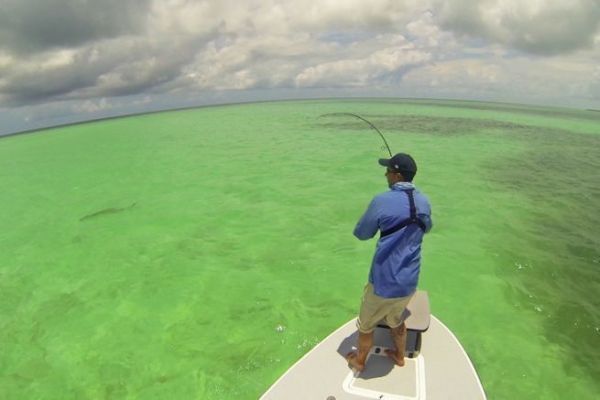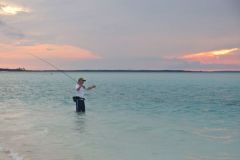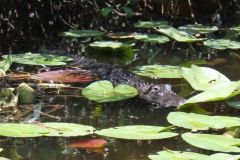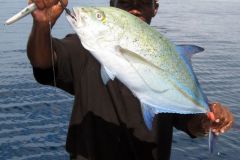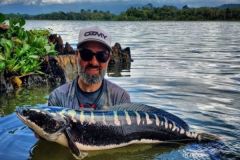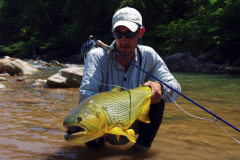The tarpons of the Keys
Tarpon is a fish that migrates throughout the year. Its fishing in South Florida is at its best between March and June, then it moves a little further north, then back down south to spend the winter in the Gulf of Mexico and the Caribbean. In Florida, more precisely in what are known as "the Keys", which are a series of successive islands, the last of which is Key West, tarpon fishing can be found both on the coast, where most of the population congregates, and on the flats. The flats (shallow areas) are ideal for sport fishing. You may find a few individuals looking for food and, above all, this gives you the opportunity to catch them on sight for maximum adrenalin.
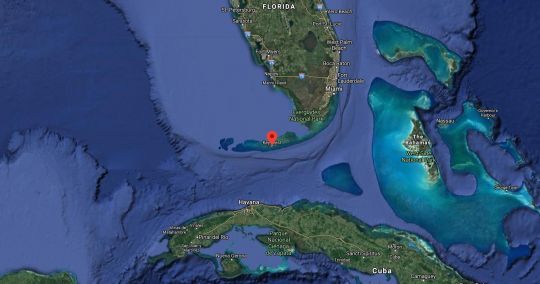
A discreet approach
With lures, you don't cast in a vacuum. The principle is above all to look for fish and see them before catching them. The crystal-clear water of the flats makes the fish very cautious, as they can see us from a distance. To spot them, we either go to places where tarpon pass through, such as the channels, and wait to see if any fish go by, or we wander around the flats hoping to come across marauding fish.
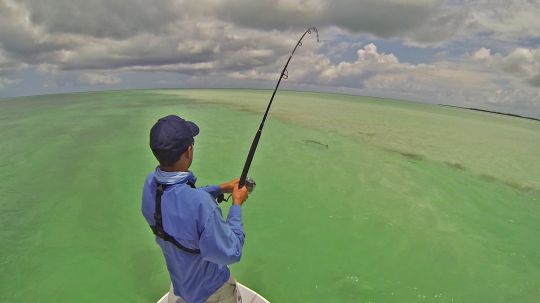
Tarpon are constantly on the move, so you need to stay focused to try and spot them as early as possible, as you usually only have one chance to cast correctly and position the lure correctly.
When you finally spot the fish, cast far ahead of them and gently retrieve the line to reach their level. Once at their level, the animation is minimalist and limited to a few strokes of the scion to maintain the lure's attractiveness. You really have to let the fish come to the lure, as a lure coming too fast will make them run away. The lure used by many is a big slug on a Texas hook, reminiscent of a red worm that tarpon love.
A serious fighter
In addition to being fierce and complicated to approach, they are also excellent at unhooking. Their very hard mouth makes it difficult for the hook to penetrate, and they often come off in the first few seconds of a fight. They well deserve their reputation in this respect.
Finally, if the fish is well hooked, the fight is not won in advance as it will empty the reel spool at full speed, make magnificent jumps and set your arms on fire with its stamina.
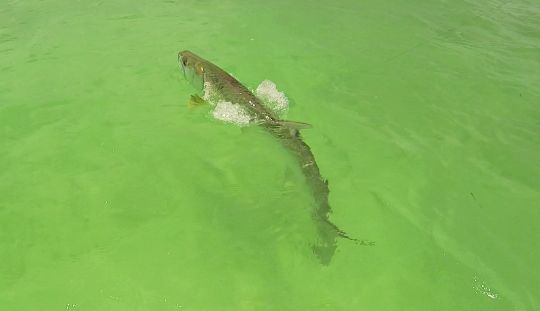
The tarpon has all the makings of a sport fish par excellence, and it's easy to understand why so many anglers are so keen on it.
The good thing about the local legislation is that it's forbidden to take tarpon out of the water, so once it arrives at the boat it's unhooked, re-oxygenated and quickly released.
This experience, thanks in particular to the guide who took me to the spots, gave me a great deal of knowledge about fishing, particularly in terms of how to present the lure to the fish. An experience I was able to put to good use on my return to France, in the summer in the Loire, where the water is clear and shallow. Just goes to show that every experience, even if it takes place on the other side of the world, brings with it a wealth of knowledge that can be put to good use in other contexts.
Equipment used
As far as equipment is concerned, you need to plan big enough: a 60lbs rod, a good capacity reel in size 10000 and a 50lbs braid are enough to cope with the biggest subjects. For your information, I had the following equipment:
